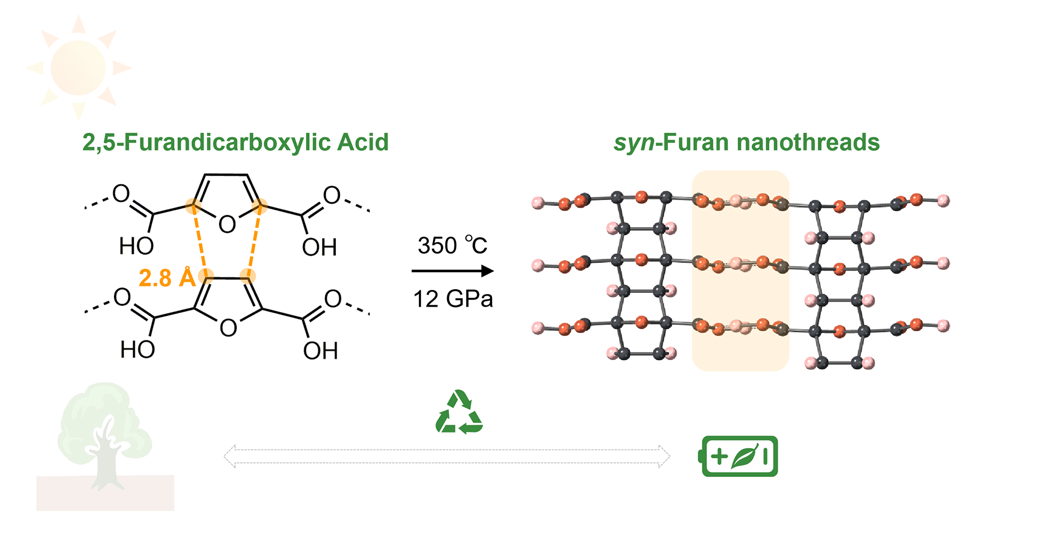Crystalline Diamond Nanotherad from Biomass Materials - Drs. Xuan Wang, Kuo Li, and Haiyan Zheng
NOVEMBER 29, 2022
New research from a team of scientists led by Drs. Kuo Li and Haiyan Zheng from the Center for High Pressure Science and Technology Advanced Research (HPSTAR) reported the first synthesize of a three-dimensional crystalline carbon nanothreads (CNThs) from a biomass precursor, 2,5-furandicarboxylic acid (FDCA), through [4+2] Diels-Alder reactions. The crystalline CNTh shows excellent electrochemical performance as an anode material of a lithium battery. This work is published in the Journal of the American Chemical Society (DOI: 10.1021/jacs.2c08914).
Carbon nanothread (CNTh) is a one-dimensional diamond material which has high tensile strength and bending modulus. In 2015, scientists synthesized the CNTh for the first time via pressure-induced polymerization of benzene. Later, starting from various aromatic molecules, a series of CNThs were synthesized. However, how to improve the atomical intra-and interthread ordering is a longstanding question for CNTh.
(FDCA) is one of the top-12 value-added chemicals from sugar and widely applied in chemical industry. “Comparing to benzene, it has fewer possible bonding routes which will help to improve the homogeneity of the CNThs. Besides, its aligned π-π stacking and intermolecular H-bonding in its structure is also critical to obtain the crystalline diamond nanothread. Therefore, the 2,5-furandicarboxylic acid is a better precursor material for CNTh,” said Dr. Kuo Li.
In this work, the scientists synthesis the atomically ordered crystalline CNTh with uniform syn-configuration (all the oxygens on one side) by compressing FDCA at ~12 GPa. With the exceptional long-range ordering in the product, they determined the precise crystal structure directly from the X-ray diffraction, showing an obvious contrast to the previously reports of CNThs. The combination spectroscopy and theoretical simulation show that the FDCA experienced continuous [4+2] Diels-Alder reactions along the stacking direction to form CNTh. Benefiting from the abundant carbonyl groups, the poly-FDCA CNTh has a high specific capacity, excellent coulombic efficiency and rate performance as an anode material of Li-battery.
“The reaction pressure of ~ 12GPa is relatively low, expected for scalable synthesis,” said Dr. Xuan Wang, the lead author of the study. “And this is the first time to use the biomass compounds to synthesize the diamond carbon nanothread materials. We believe our study will provide a new route to synthesis advanced functional carbon materials,” added Dr. Haiyan Zheng.

sp3-碳纳米线是一种一维金刚石纳米材料,具有很高的拉伸强度和极强的柔韧性。2015年,科学家首次通过苯的压力诱导聚合得到了金刚石纳米线。随后,人们利用各种芳香化合物的压力诱导聚合得到了一系列的金刚石纳米线材料。然而,其线内与线间的有序性较差,阻碍了进一步的实际应用。近期,北京高压科学研究中心的李阔、郑海燕研究员课题组在极端高压条件下首次合成得到了原子级有序的金刚石纳米线,并且他们发现这种金刚石纳米线作为锂电池的电极材料表现出了优异的电化学特性。相关工作发表在《美国化学会志》上。
